This article dives into nine behavior plan examples that are specifically designed to help manage challenging behaviors effectively, especially in children with autism. It highlights how important it is to have personalized strategies, like Behavior Intervention Plans (BIPs), Positive Behavioral Interventions and Supports (PBIS), and data collection methods. Research shows that these tailored approaches can really enhance behavioral outcomes and promote long-term growth.
Let’s explore this together! By focusing on what works best for each child, we can make a real difference. Each strategy is backed by research, showing that when we personalize our approach, we foster not just immediate improvements but also lasting development. We’re here to help you every step of the way!
Navigating behavior management can often feel like wandering through a complex maze, especially for parents of children with challenging behaviors. With so many strategies available—like personalized behavior plans and structured interventions—the real challenge is finding the most effective approaches tailored to each child's unique needs. But what happens when traditional methods just don't seem to work?
Let’s explore this together! This article dives into nine innovative behavior plan examples that not only tackle immediate behavioral issues but also promote long-term growth and independence. Our goal is to empower families and professionals alike, helping you create meaningful change. We’re here to help you every step of the way!
At Rori Care, we understand that navigating the world of ABA therapy can feel overwhelming for parents. That’s why we utilize a data-informed approach to develop a behavior plan example through Applied Behavior Analysis (ABA). Each behavior plan example is thoughtfully customized to address the unique needs of your child. Our mental health professionals conduct thorough assessments, which are essential for identifying the best strategies to encourage positive changes.
This careful approach, rooted in comprehensive evaluations, not only addresses immediate behavioral challenges but also nurtures long-term growth and independence for individuals with autism. For instance, studies have shown that personalized behavior strategies can lead to significant improvements in development. In fact, we’ve seen clinically meaningful adaptive behavior enhancements in the lowest functioning youth after just 24 months of ABA therapy.
What’s more, over 20 studies support the effectiveness of programs that provide 25 to 40 hours of therapy each week over a span of 1 to 3 years. By focusing on personalized care, Rori Care empowers families and therapists to achieve transformative outcomes, creating an environment where every child can thrive.
We also embrace innovative technology! Our creative use of advanced AI allows for automatic progress report creation, freeing up 50% more time for your child’s treatment. If you’re considering ABA therapy, we encourage you to ask about the evaluation process and how we create a behavior plan example that is tailored to your child’s unique needs. Let’s explore this journey together, ensuring your child receives the support they deserve!
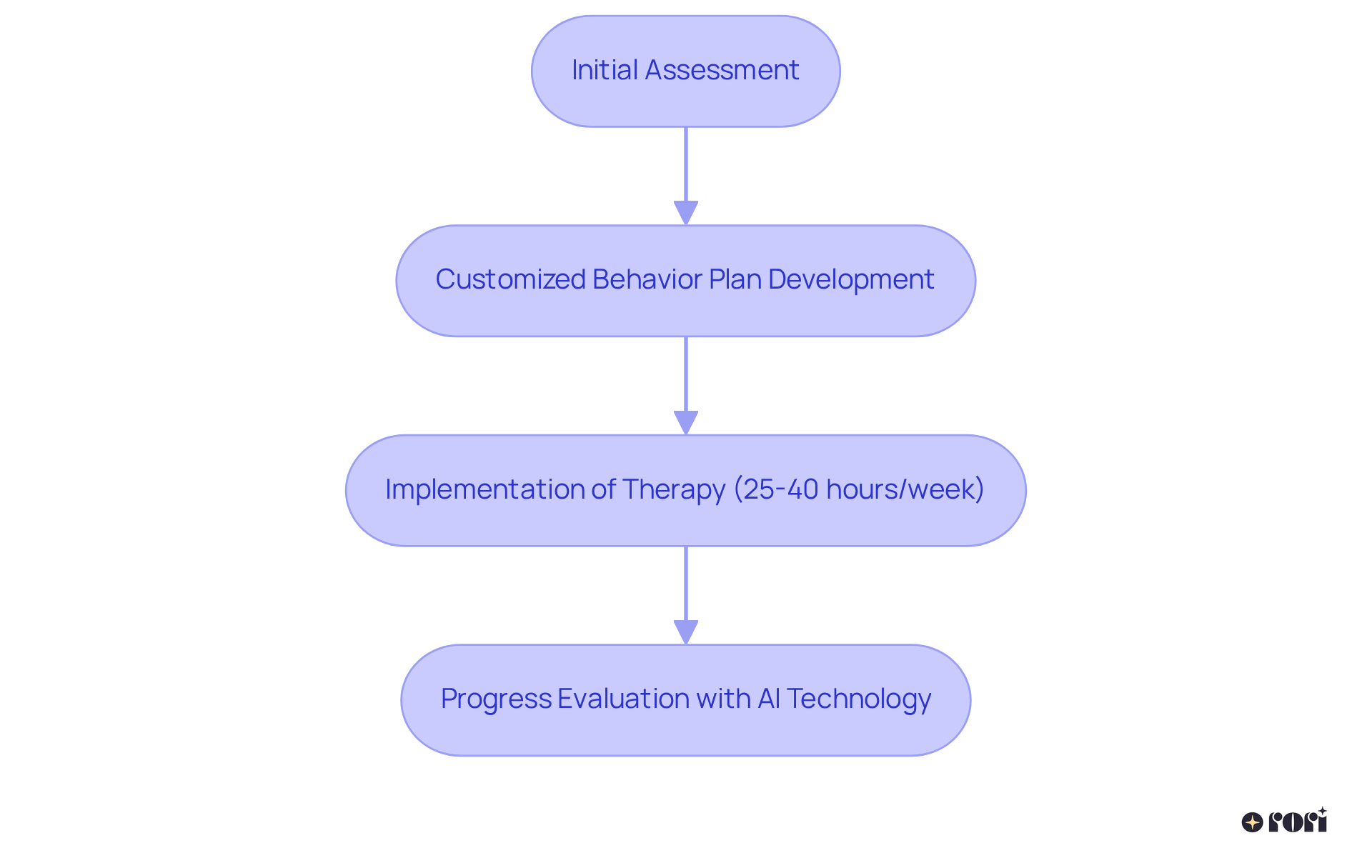
An example of a behavior plan, specifically a Behavior Intervention Plan (BIP), is a vital tool for addressing challenging behaviors in young people. This helpful document lays out the specific behaviors we want to change, the situations where these behaviors occur, and the tailored strategies we’ll use. By gathering insights from functional behavior assessments, clinicians can craft BIPs that are both effective and adaptable to each individual's needs.
What’s great about this organized approach is that it fosters teamwork among parents, teachers, and therapists. Together, we can create a consistent strategy to support the child's behavioral development. Research shows that structured methods significantly enhance intervention success, with about 64% of individuals diagnosed with autism benefiting from Applied Behavior Analysis (ABA) techniques. Real-life examples demonstrate that a behavior plan example, when well-implemented, can lead to remarkable improvements in youth behavior, highlighting the importance of a systematic approach to behavior management.
Let’s explore this together! If you’re navigating these challenges, remember that you’re not alone. We’re here to help you every step of the way!
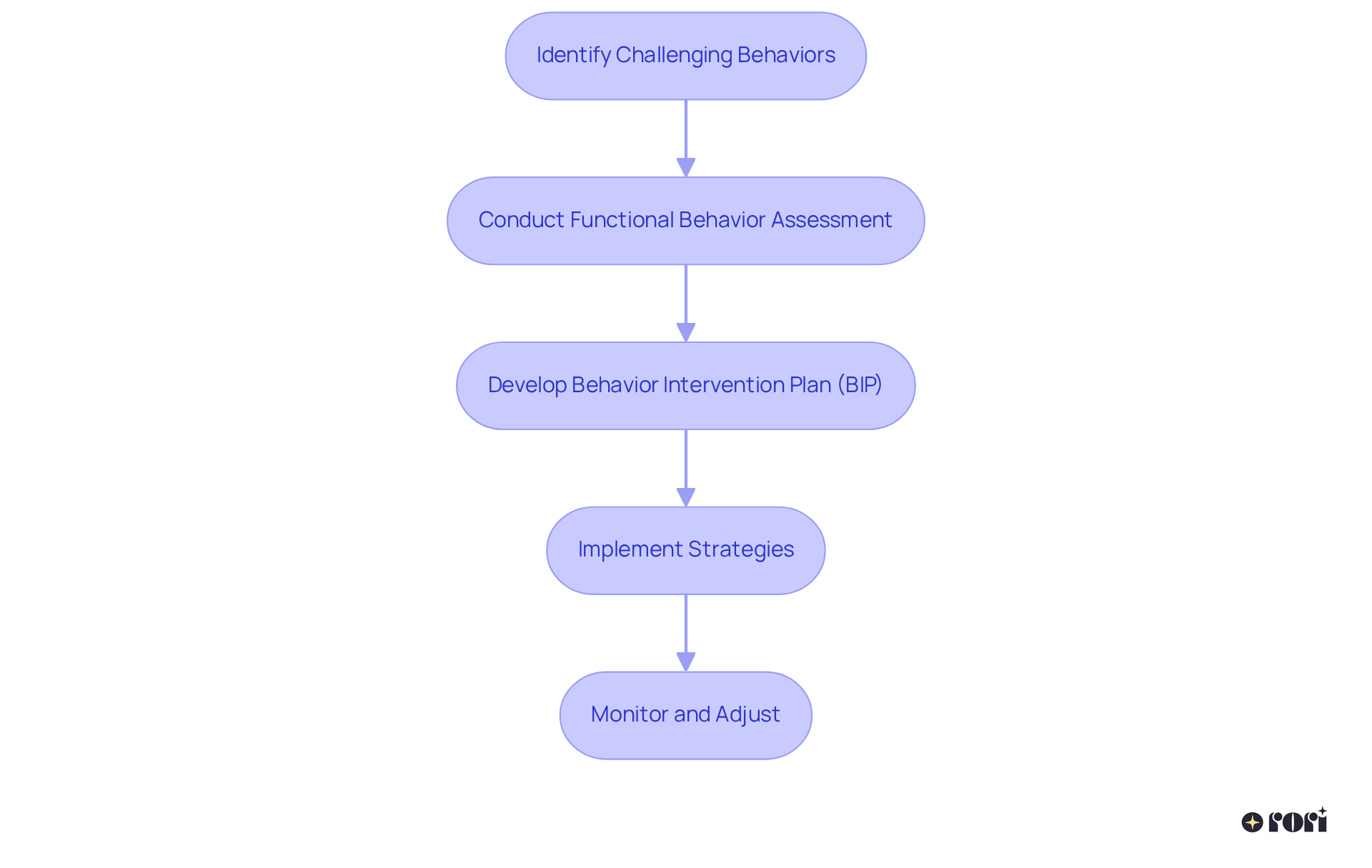
Positive Behavioral Interventions and Supports (PBIS) is a fantastic framework designed to encourage positive actions and reduce challenging behaviors in individuals of all ages. By setting clear expectations and consistently promoting suitable behaviors, PBIS creates a supportive atmosphere where youth can truly thrive. This proactive approach not only benefits individual students but also enhances the overall classroom vibe, leading to better social interactions and academic performance.
Research shows that schools implementing PBIS have seen significant reductions in office discipline referrals. In fact, children in these environments are 33% less likely to receive such referrals compared to their peers in non-PBIS schools! Pretty impressive, right? Furthermore, PBIS promotes prosocial actions and effective emotion regulation, contributing to a more conducive learning environment.
As of 2025, PBIS is actively in use in over 16,000 schools across the United States, showcasing its widespread acceptance and effectiveness in improving classroom conduct management and academic success. To truly maximize the benefits of PBIS, it’s essential to create a behavior plan example that sets measurable objectives tailored to each child's unique needs. Plus, engaging caregivers in the planning process ensures they have the tools and strategies necessary to support their children's behavioral goals effectively. Let’s explore this together and see how we can make a difference!
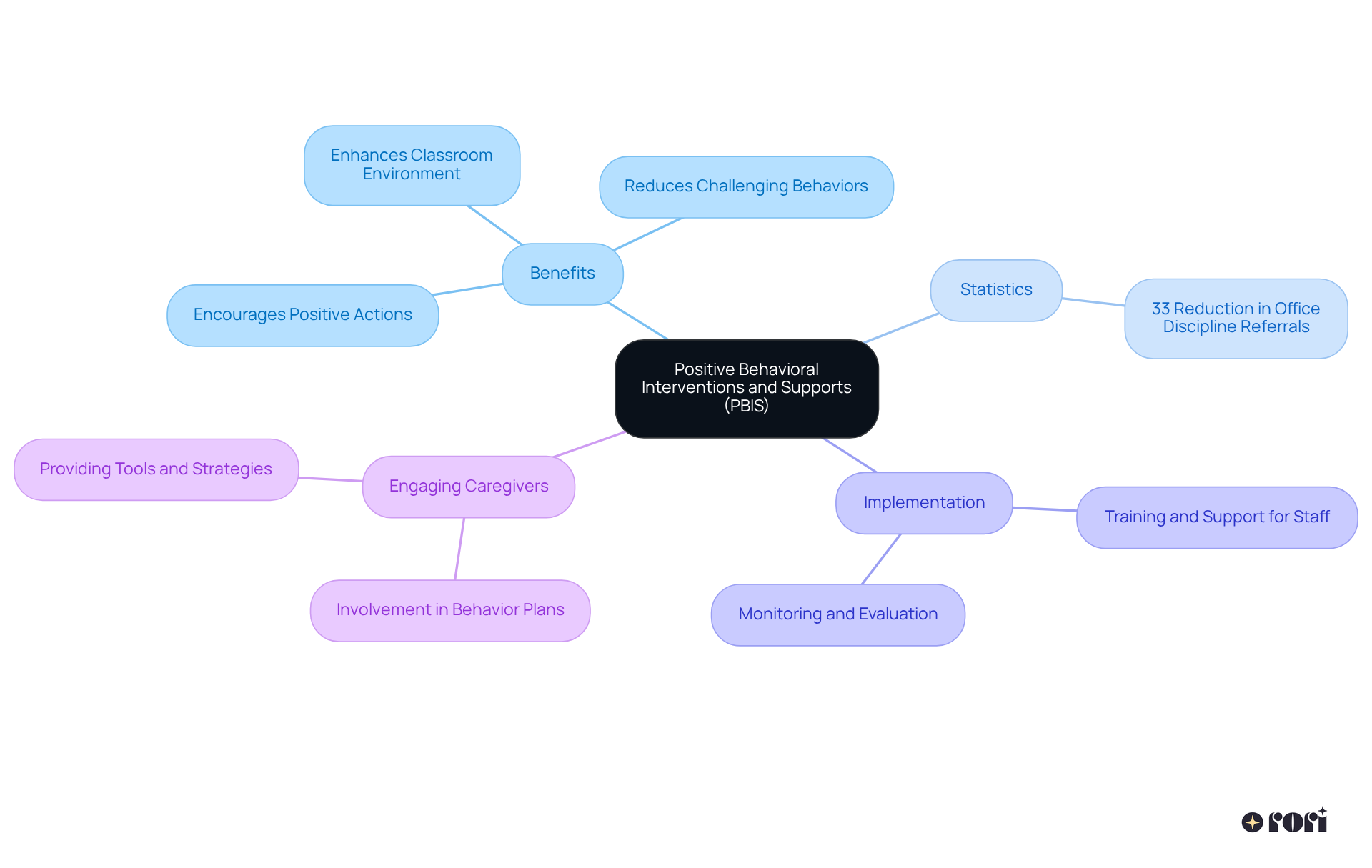
A Functional Behavioral Assessment (FBA) is a systematic method that helps us understand the key factors behind challenging behaviors in children. This process involves gathering information through observations, interviews, and direct evaluations. By doing this, clinicians can identify specific triggers related to certain actions. For example, studies have found that common triggers include:
Understanding these triggers is really important for creating effective and personalized interventions. It’s not just about addressing the behaviors; it’s also about changing the environmental factors that might be making things worse. An effective FBA lays the groundwork for developing a behavior plan example that’s tailored to each child's unique needs. Ultimately, this approach can lead to better behavioral outcomes and enhance overall well-being. Let’s explore this together!
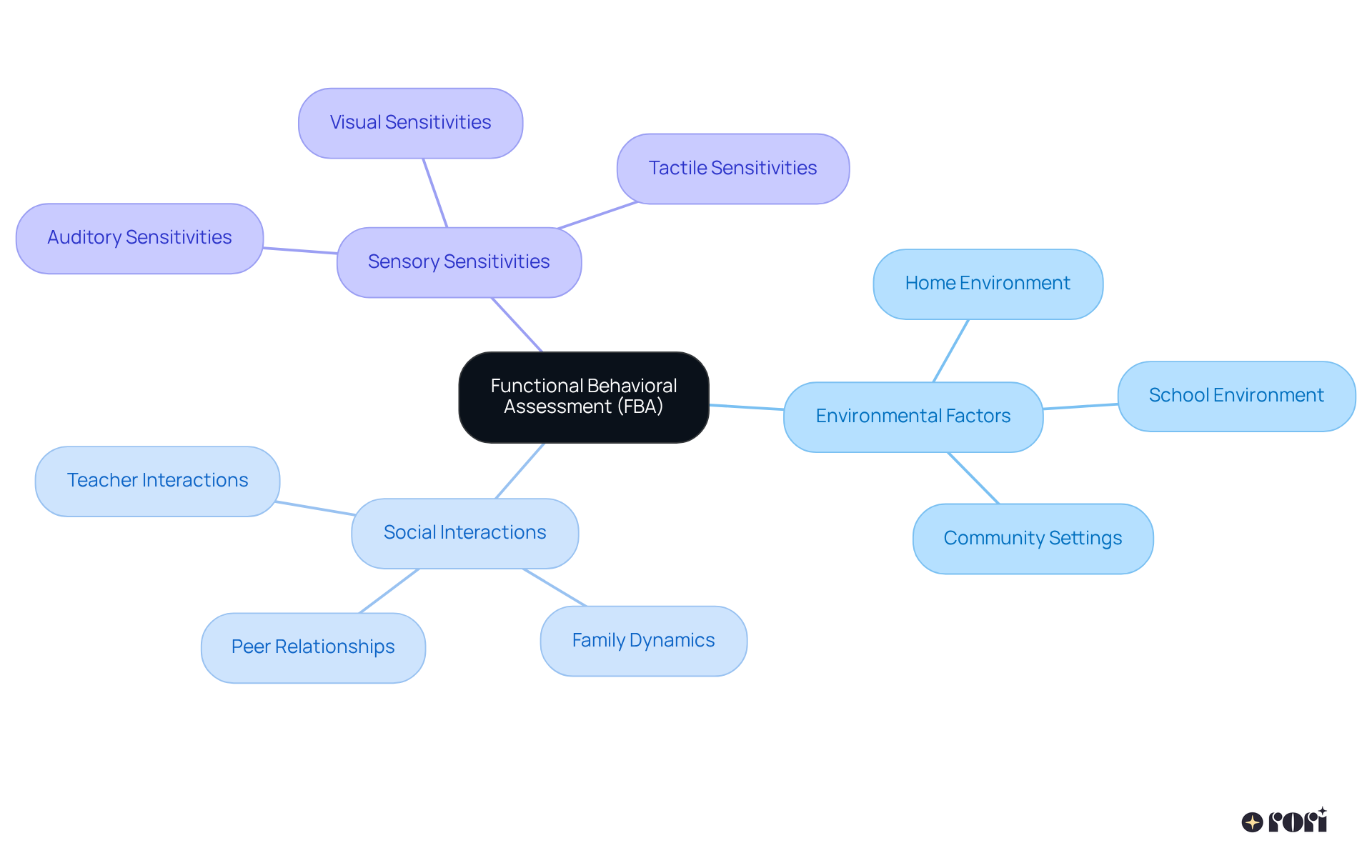
Narratives serve as a vital tool for teaching young people with autism about social situations and appropriate responses. These stories offer clear and concise accounts of various societal scenarios, helping kids grasp what to expect and how to react. By using relatable language and visuals, narrative tales significantly boost a young person’s understanding of behavioral norms, easing anxiety and encouraging positive interactions with peers.
This behavior plan example not only helps in managing behavior but also plays a crucial role in developing essential interaction skills. Research shows that five out of six trials in a systematic review found statistically significant benefits linked to social interaction in youth with autism spectrum disorder (ASD) when narrative techniques were used. Plus, therapists emphasize that these stories allow kids to practice and visualize social situations, leading to improved social skills and greater confidence in navigating social interactions.
Educating caregivers is equally important, as it empowers parents to reinforce these skills at home, which contributes to a consistent behavior plan example for achieving behavioral goals. Rori Care's clinical leadership team, committed to neurodiversity, guides this process, making sure both youth and caregivers receive the support they need on their journey to success. Let’s explore this together!
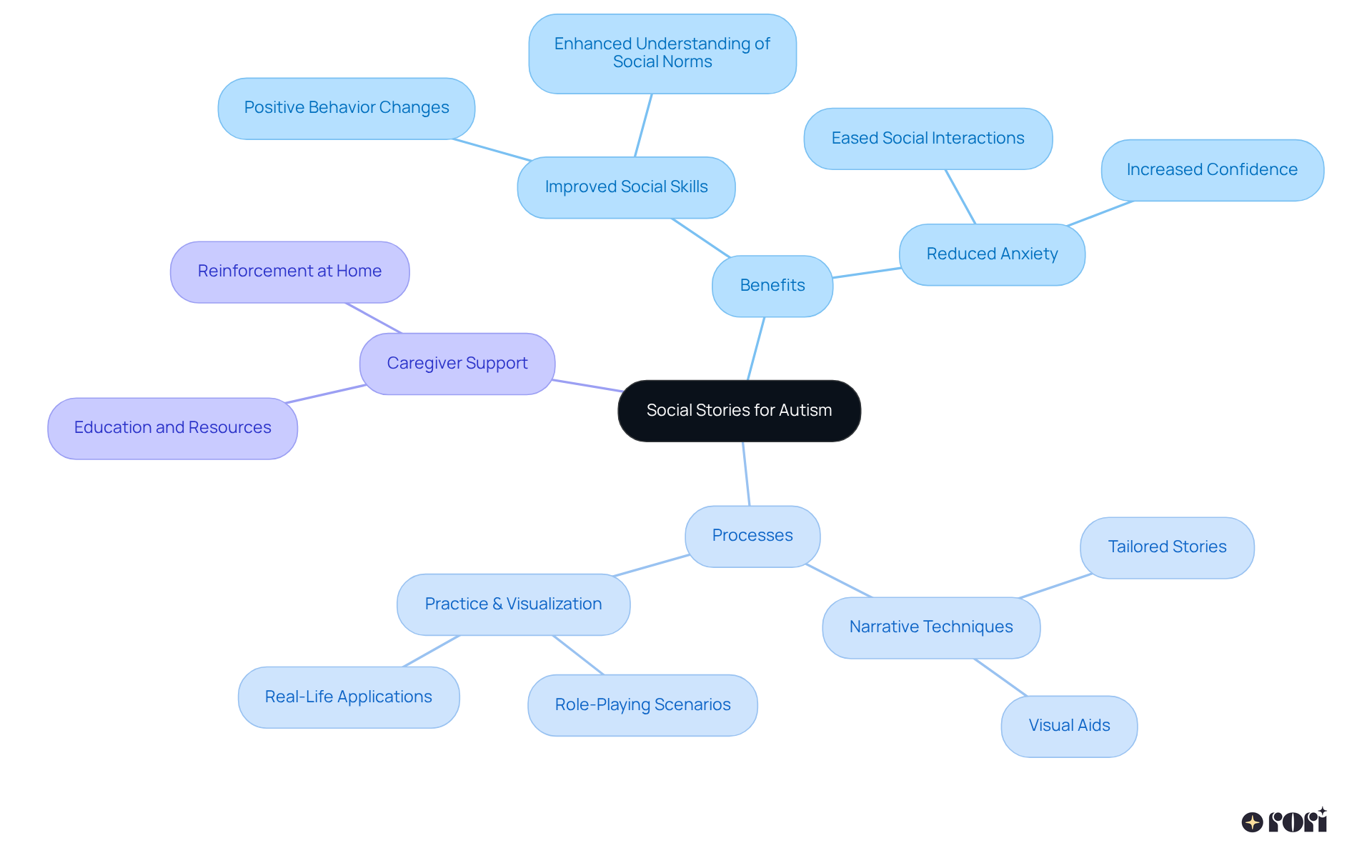
An effective behavior plan example is a token economy system, which manages behaviors by using tokens as rewards for positive actions. Imagine young individuals earning tokens for showing desired behaviors, which they can later trade for fun rewards or privileges! This behavior plan example not only motivates them to engage in positive actions but also assists them in developing skills such as delayed gratification and self-control.
When rewards are tailored to a young person's interests, the effectiveness of token economies really shines, encouraging lasting behavioral changes. Studies have shown that children are more likely to stay engaged and motivated when incentives are personalized, leading to better outcomes in changing behaviors. Plus, certified behavior analysts emphasize that a behavior plan example utilizing reinforcement strategies, like token economies, can effectively boost positive actions while minimizing negative ones, making them an invaluable tool in autism treatment.
By understanding how a token economy works, caregivers and educators can create a behavior plan example that nurtures positive behaviors and personal growth. It's essential to set clear expectations from the beginning to effectively manage actions, and building nurturing relationships with young individuals is key to encouraging positive conduct.
As behavior analyst Shawna McElroy points out, "ABA therapy is a science-based method for autism treatment that aims to comprehend why individuals with autism act as they do and then apply evidence-based techniques to impart new skills." Equipping caregivers with ABA principles and techniques can enhance their ability to support their children's behavioral goals through active involvement and data collection, ultimately leading to improved behavioral outcomes.
Integrating technology-enhanced strategies can further support the implementation of token economies, aligning perfectly with Rori Care - ABA Therapy's mission to provide effective and empowering autism care. Continuous assessment and adjustment of these strategies ensure that they meet the evolving needs of each individual. Let’s explore this together!
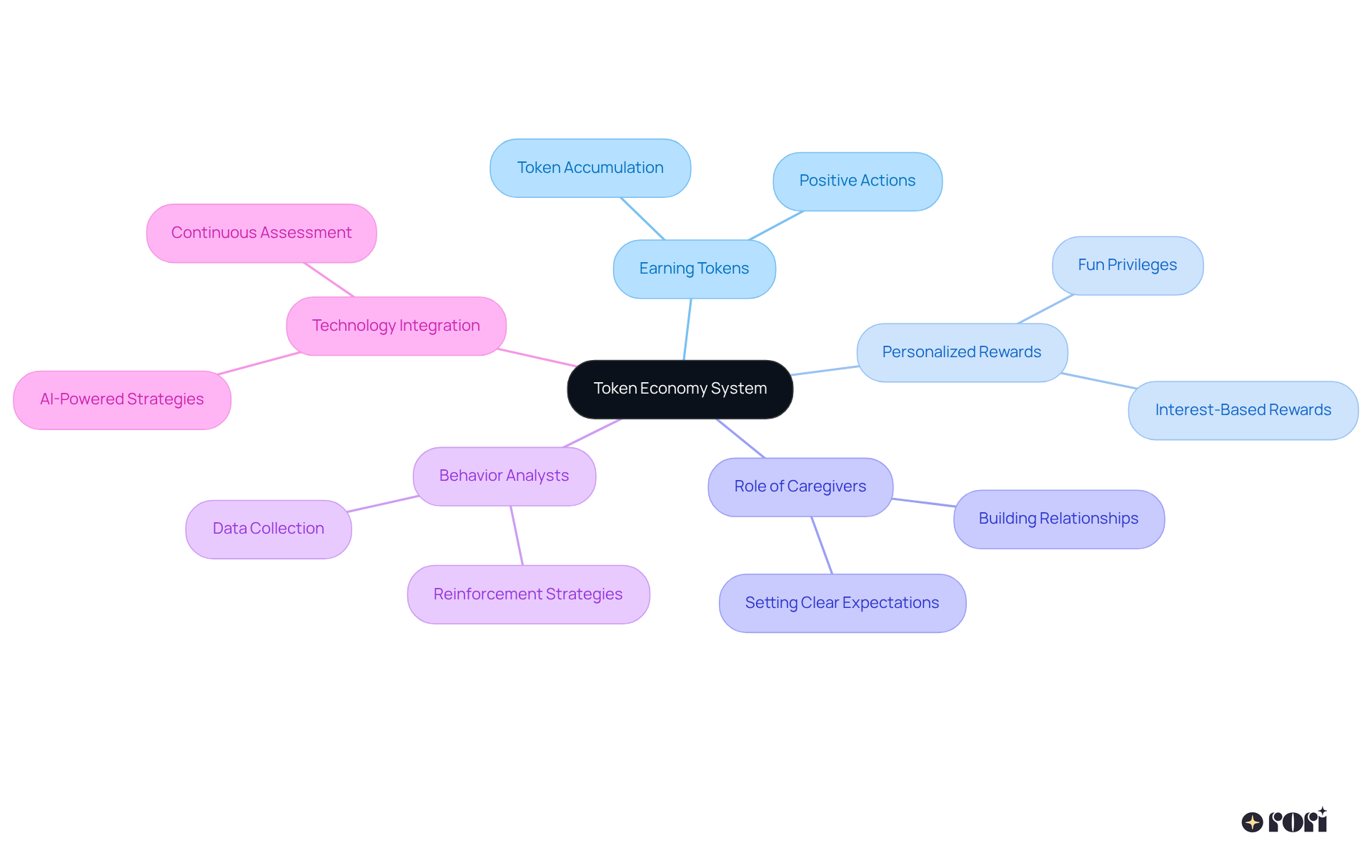
Cognitive Behavioral Techniques (CBT) play a vital role in helping us understand how our thoughts, emotions, and behaviors interact. By guiding youth to identify and confront negative thought patterns, CBT encourages healthier coping strategies and improves emotional regulation. This is especially important for young people with autism, as about 70% face emotional challenges like anxiety and frustration.
Research shows that CBT can significantly enhance emotional management. For instance, studies reveal that 74% of children who received immediate treatment reported improvements, compared to just 31% in waitlist groups. Isn’t that remarkable? Incorporating a behavior plan example that uses CBT methods into intervention strategies not only boosts their effectiveness but also fosters lasting behavioral change.
In real-world situations, CBT has proven its ability to reduce anxiety and enhance social communication. This makes it an invaluable resource for clinicians and families alike. So, let’s explore this together! We’re here to help you every step of the way!
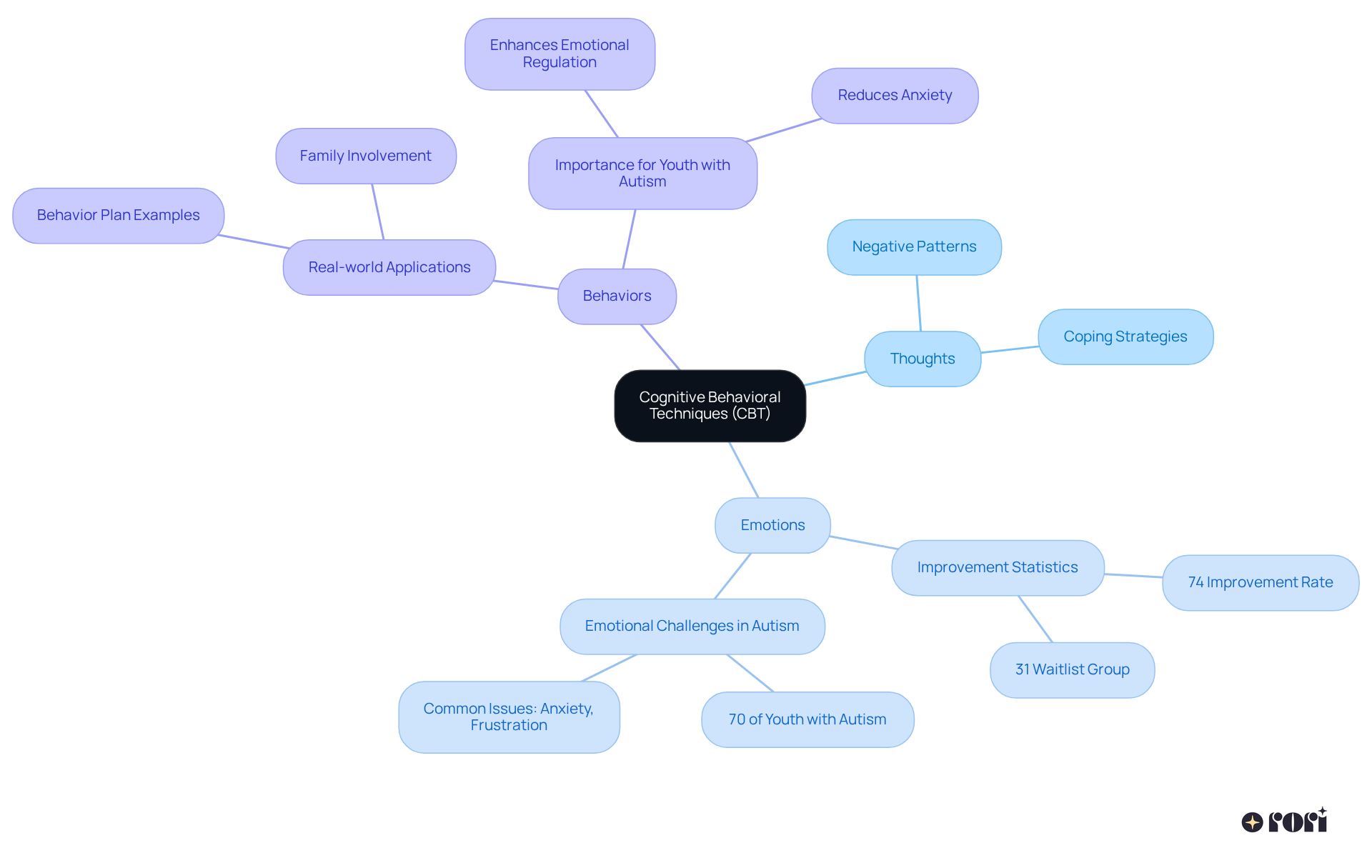
Parent training programs are crucial for equipping families with the tools they need to implement a behavior plan example effectively at home. At Rori Care, we’re here to support your family's journey with compassionate Applied Behavior Analysis treatment. Our goal is to empower parents with the knowledge and skills necessary to reinforce positive behaviors and tackle challenging ones together.
Research shows that when parents get involved, it really makes a difference for their children. In fact, studies reveal an average effect size of 0.553 for parent-implemented interventions (PIIs). This teamwork between parents and clinicians ensures that interventions stay consistent across different environments, creating a nurturing atmosphere for your child’s growth.
As a result, the bond between parent and child becomes stronger, leading to better behavioral outcomes and overall well-being. Family therapists highlight how vital it is to empower parents in autism care. Engaged parents can directly impact their child's progress by effectively applying what they’ve learned.
By investing in parent training, families can cultivate a supportive environment that fosters positive behavior and emotional growth. Plus, Rori Care offers a behavior plan example through structured training sessions that not only enhance conduct management but also strengthen the collaboration between parents and clinicians. This ultimately leads to more meaningful and lasting behavioral improvements.
So, why not think about joining our caregiver education program? Together, we can enhance your young one's development and make a positive impact on their journey!
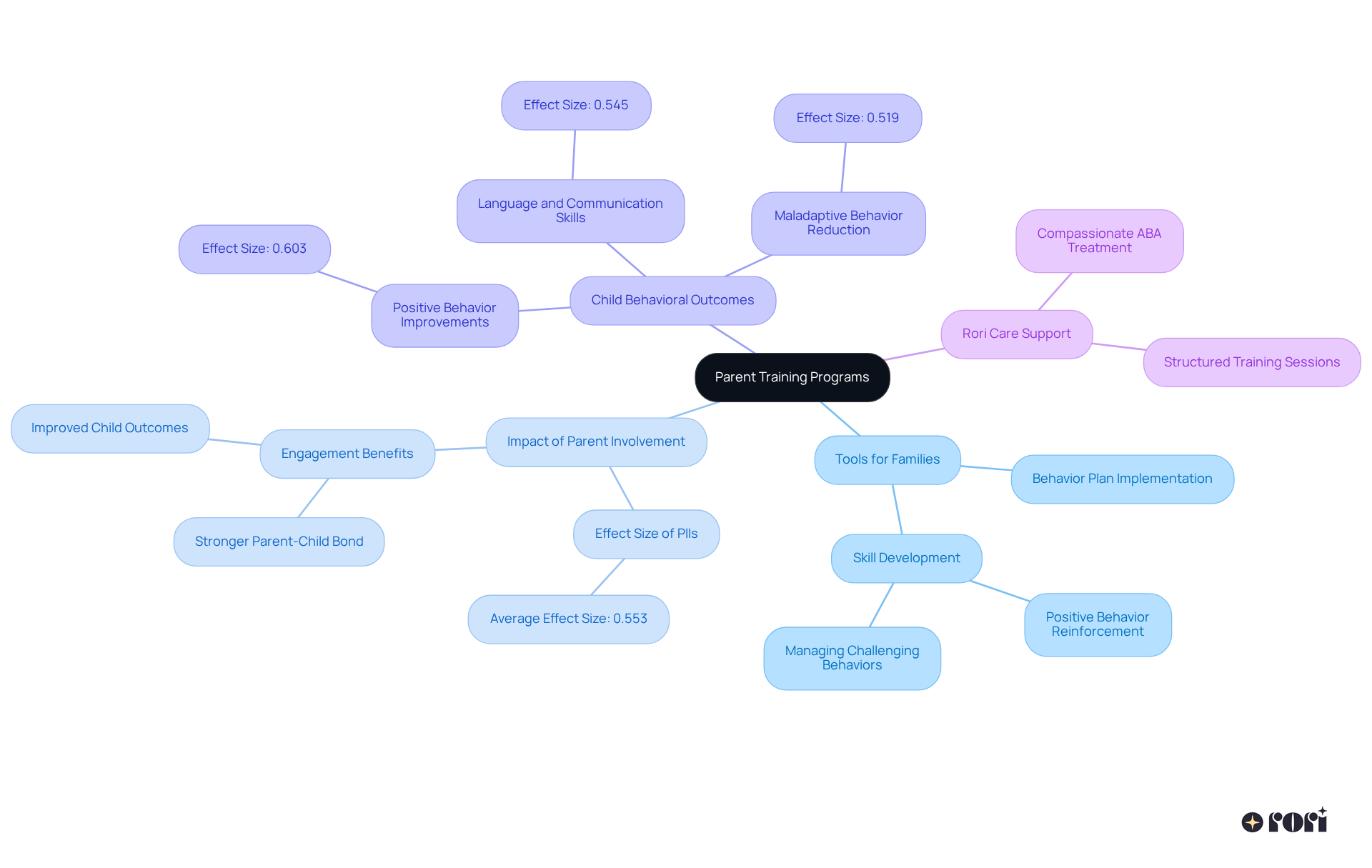
Visual aids play a vital role in management strategies for individuals with autism. These handy tools—think pictures, charts, and schedules—help clarify expectations and create a structured environment. When we incorporate visual aids, young learners can better understand the steps needed to follow a behavior plan example, which can significantly help reduce anxiety and confusion.
This approach not only boosts communication but also encourages independence, allowing kids to navigate their surroundings with more confidence. Research shows that visual supports can significantly enhance compliance. In fact, studies reveal that they assist individuals in grasping daily routines and making informed choices. For example, task boxes designed to teach specific social skills have proven effective in improving peer relationships and social awareness among autistic students.
Moreover, a behavior plan example that utilizes visual schedules has been linked to a better understanding of transitions and expectations, ultimately leading to improved behavioral outcomes. As teachers and caregivers apply these methods, they create an environment where children can truly thrive. It highlights just how important visual aids are in promoting adherence and encouraging positive behavior.
Regularly assessing these visual aids is a great idea, too! It helps set measurable goals and gather insights over time, ensuring these resources stay effective for young learners. By empowering caregivers with knowledge and strategies, they can make informed choices that positively impact their child's progress. Together, we can enhance the effectiveness of these interventions. Let’s explore this journey together!

Gathering data is crucial for keeping track of how well action plans are working. At Rori Care, we focus on personalized planning, ensuring that each behavior plan example is tailored specifically to your child's unique needs. By keeping a detailed record of actions, our clinicians can spot trends and make informed decisions about any adjustments needed in interventions.
Common methods for collecting data include:
Our behavior analysts set clear, measurable goals for change, providing a transparent way to see progress. They use evidence-based strategies backed by the latest research, ensuring that the data we collect is both relevant and actionable.
For example, frequency recording helps us track how often a behavior occurs, while duration recording tells us how long it lasts. This gives us valuable insights into behavior patterns. The ongoing evaluation process allows for continuous improvement in a behavior plan example, ensuring they adapt to your child's changing needs.
Plus, with our innovative AI technology, we automate the generation of progress reports, making things easier and freeing up 50% more time for your child's treatment. This not only streamlines the process but also enhances the overall efficiency of ABA therapy. Let’s explore this together and ensure your child gets the best support possible!

Implementing effective behavior plans is essential for managing challenging behaviors in children, especially those with autism. This article highlights various strategies, like personalized behavior plans, Behavior Intervention Plans (BIPs), and Positive Behavioral Interventions and Supports (PBIS). Each approach underscores the importance of customization and collaboration among parents, educators, and therapists to encourage positive changes and long-term growth.
Key insights reveal that using data-informed methods—such as Functional Behavioral Assessments (FBAs), social stories, token economy systems, and Cognitive Behavioral Techniques (CBT)—can significantly enhance behavior management strategies. Engaging parents through training programs and utilizing visual supports can create a consistent and supportive environment that nurtures children's development.
In summary, the journey toward effective behavior management is collaborative and dynamic, requiring tailored strategies that address individual needs. By embracing these approaches, families and professionals can work together to create meaningful and lasting behavioral improvements. It’s crucial to recognize the significance of these strategies and think about how they can be integrated into everyday practices, ensuring that every child has the opportunity to thrive and succeed. Let’s explore this together!
What is Rori Care's approach to ABA therapy?
Rori Care utilizes a data-informed approach to develop personalized behavior plans through Applied Behavior Analysis (ABA), ensuring each plan is customized to address the unique needs of each child.
How does Rori Care assess a child's needs for ABA therapy?
Mental health professionals at Rori Care conduct thorough assessments to identify the best strategies for encouraging positive changes in behavior.
What are the expected outcomes of personalized behavior strategies in ABA therapy?
Personalized behavior strategies can lead to significant improvements in development, with clinically meaningful enhancements observed in low-functioning youth after 24 months of therapy.
How many hours of therapy are recommended for effective ABA outcomes?
Research supports the effectiveness of providing 25 to 40 hours of therapy each week over a span of 1 to 3 years.
How does Rori Care utilize technology in their therapy approach?
Rori Care employs advanced AI technology to automate progress report creation, which frees up 50% more time for a child's treatment.
What is a Behavior Intervention Plan (BIP)?
A Behavior Intervention Plan (BIP) is a structured document that outlines specific behaviors to change, the situations in which these behaviors occur, and tailored strategies for intervention.
How do BIPs foster teamwork among caregivers and professionals?
BIPs promote collaboration among parents, teachers, and therapists to create a consistent strategy that supports the child's behavioral development.
What is the success rate of individuals diagnosed with autism using ABA techniques?
Research indicates that about 64% of individuals diagnosed with autism benefit from Applied Behavior Analysis (ABA) techniques.
What is Positive Behavioral Interventions and Supports (PBIS)?
PBIS is a proactive framework designed to encourage positive behaviors and reduce challenging behaviors by setting clear expectations and promoting suitable actions.
What impact does PBIS have on school discipline referrals?
Schools implementing PBIS have seen significant reductions in office discipline referrals, with children in these environments being 33% less likely to receive such referrals compared to their peers in non-PBIS schools.
How widespread is the implementation of PBIS in schools?
As of 2025, PBIS is actively used in over 16,000 schools across the United States, demonstrating its effectiveness in improving classroom conduct management and academic success.
Why is caregiver engagement important in creating behavior plans under PBIS?
Engaging caregivers in the planning process ensures they have the necessary tools and strategies to effectively support their children's behavioral goals.